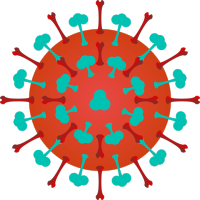| disease | Acute Gastric Mucosal Lesion |
| alias | Gastritis, Acute Erosive Gastritis, Acute Gastric Ulcer, Stress Ulcer, Hemorrhagic Erosive Gastritis |
Stress ulcer is an acute ulcer, primarily involving defects in the gastric and/or duodenal mucosa, which can appear within hours after severe stress. The mucosal defects may manifest as multiple erosions (superficial damage only reaching the mucosal muscle layer) or as single or multiple ulcers (damage extending below the mucosal muscle layer). The diameter of the ulcer can reach 20mm. Stress ulcers can heal within a few days without leaving scars. Since the ulcer does not invade the muscle layer, it rarely causes clinical pain. The main clinical symptom is bleeding, which can range from mild to severe, often presenting as hematemesis or melena. Severe bleeding can be fatal.
bubble_chart Pathogenesis
The disease cause and pathogenesis of this disease have not yet been fully elucidated. It is generally believed that it may be related to various exogenous or endogenous disease-causing factors leading to reduced mucosal blood flow or the destruction of normal mucosal defense mechanisms, combined with the injurious effects of gastric acid and pepsin on the gastric mucosa:
(1) Exogenous factors Certain drugs such as non-steroidal anti-inflammatory drugs (e.g., aspirin, phenylbutazone, indomethacin), adrenal corticosteroids, certain antibiotics, and alcohol can injure the gastric mucosal barrier, resulting in increased mucosal permeability. Hydrogen ions from gastric juice then back-diffuse into the gastric mucosa, causing mucosal erosion and bleeding. Reduced mucus secretion and slowed renewal of gastric mucosal epithelial cells can also lead to this disease.
(2) Endogenous factors These include severe infections, major trauma, intracranial hypertension, severe burns, major surgery, shock, excessive stress, and fatigue. Under stress conditions, both the sympathetic and vagus nerves can be stimulated. The former causes spasmodic contraction of gastric mucosal blood vessels, reducing blood flow, while the latter opens submucosal arteriovenous shunts, exacerbating mucosal ischemia and hypoxia. This leads to damage of the gastric mucosal epithelium, resulting in erosion and bleeding. Severe shock can trigger the release of substances such as serotonin and histamine. Serotonin stimulates gastric parietal cells to release lysosomes, directly damaging the gastric mucosa, while histamine increases the secretion of pepsin and gastric acid, thereby impairing the gastric mucosal barrier.
bubble_chart Pathological ChangesThe typical lesions of this disease are multiple erosions and superficial ulcers, often with clustered hemorrhagic foci, which can spread throughout the entire stomach or affect only a portion of it, most commonly in the gastric fundus. Microscopic examination reveals that the gastric mucosal epithelium loses its normal columnar shape, becoming cuboidal or square, with shedding. The mucosal layer exhibits multiple focal hemorrhagic necrosis, particularly prominent in the glandular neck regions rich in capillaries, and even the lamina propria shows hemorrhage. Neutrophils aggregate around the glandular necks, forming small abscesses, and capillary congestion and thrombosis can also be observed.
bubble_chart Clinical Manifestations
The onset is relatively acute, with sudden upper gastrointestinal bleeding occurring during the course of the primary disease, manifesting as hematemesis and melena, while isolated melena is rare. The bleeding is often intermittent. Massive bleeding can lead to syncope or shock, accompanied by anemia. During the bleeding, there may be dull pain or tenderness in the upper abdomen. Endoscopic examination, especially emergency endoscopy performed within 24 to 48 hours of onset, reveals gastric mucosal erosion, bleeding, or superficial ulcers, particularly common in the upper gastric body.
The diagnosis can be suggested based on medical history and clinical manifestations, but confirmation requires emergency endoscopy. After 48 hours, the lesions may no longer be present.
bubble_chart Treatment Measures
The primary disease should be actively treated, and possible causative factors should be eliminated. After hematemesis stops, a liquid diet should be given. Intravenous infusion of histamine H2 receptor antagonists such as cimetidine, ranitidine, and famotidine; proton pump inhibitors such as omeprazole can maintain gastric pH > to significantly reduce bleeding. For diffuse gastric membrane bleeding, ice-cold saline lavage can be used. For small stirred pulse bleeding, high-frequency electrocoagulation or laser coagulation can be performed under direct gastroscopic visualization. Prostaglandin preparations such as misoprostol (Cytotec) can prevent the occurrence of stress ulcers. If massive bleeding cannot be controlled by the above treatments, surgical intervention may be considered. Recent reports suggest that sucralfate can prevent bleeding without causing pneumonia due to bacterial proliferation in the swallowing area caused by acid-suppressing drugs.
If the cause of the disease can be removed, the prognosis is better; otherwise, it often endangers life due to massive or recurrent bleeding.







